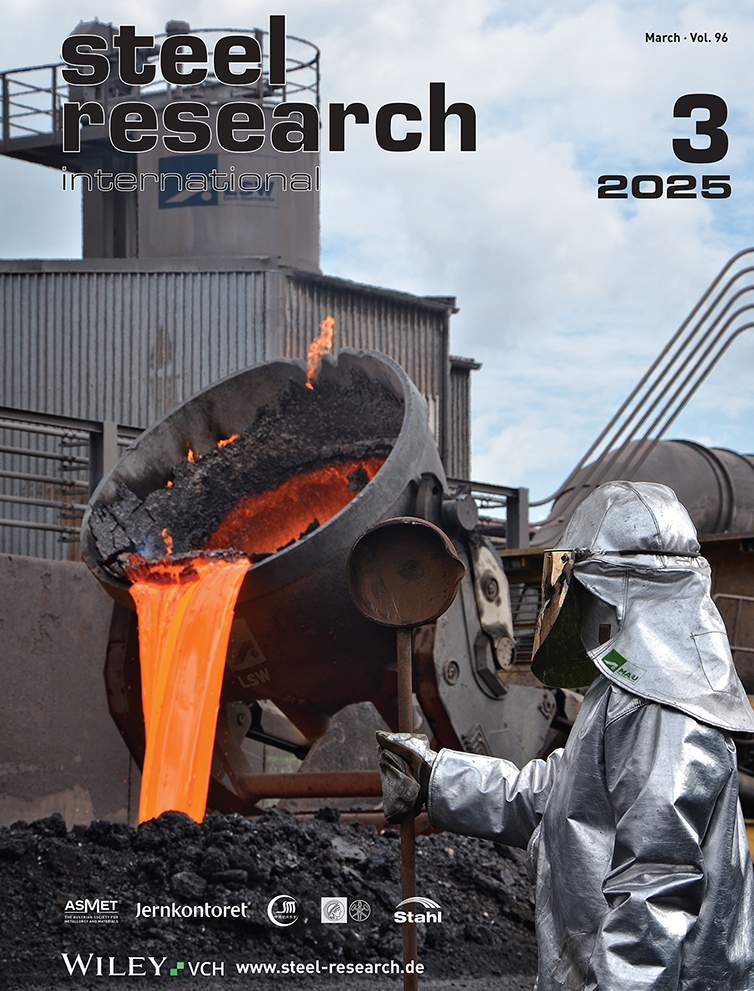Strain Rate Sensitivity of Low-Temperature Superplastic Heterogeneous Medium-Mn Steel Fabricated by a Novel High-Ratio Differential Speed Rolling
Abstract
In the present article, insights into the high-temperature deformation behavior of medium-Mn steel (MMS), which is prepared via high-ratio differential speed rolling (HRDSR), are provided. Moreover, through innovative bidirectional jump experiments, variations in the strain rate sensitivity index m under various conditions are obtained. In the research findings, it is indicated that an increase in strain rate (SR) leads to a hardening of the alloy. During high-temperature deformation, the value of m decreases with the increase in SR, but the rate of decrease gradually slows down. Furthermore, the higher the temperature (T), the greater the impact of changes in SR on m. In addition, the change in deformation mechanism during deformation leads to microstructural changes, and under the main deformation mechanism of grain-boundary sliding, m generally increases with strain. Interestingly, at a T of 760 °C, the material exhibits a strong texture with high orientation, resulting in larger m values and superior superplasticity (≈691%). This study not only enriches the research content of HRDSR but also has significant implications for the superplasticity research of MMS. Moreover, a reference is provided for the research of other superplastic materials.
Conflict of Interest
The authors declare no conflict of interest.
Open Research
Data Availability Statement
Data sharing is not applicable to this article as no new data were created or analyzed in this study.




